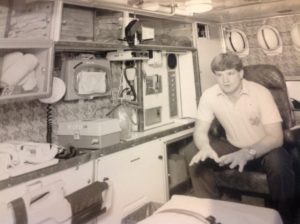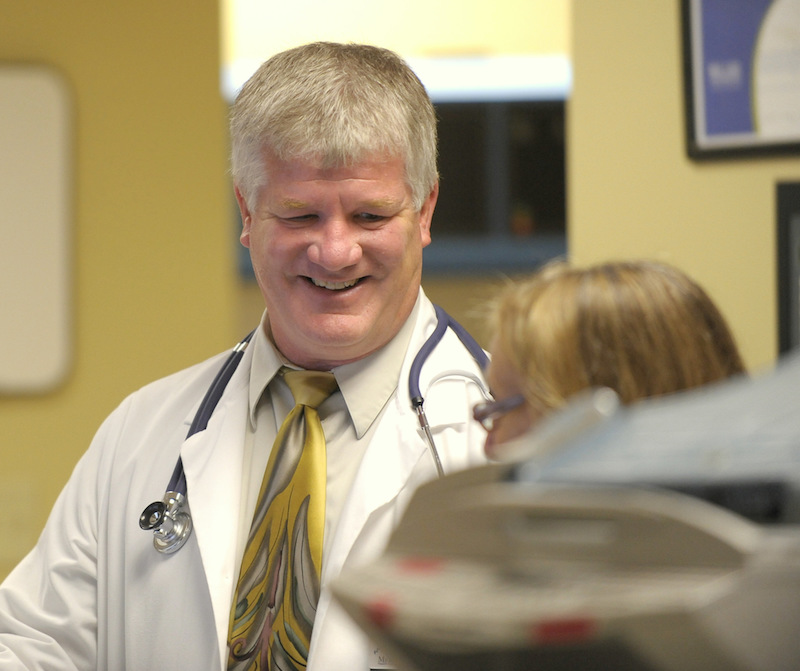Always learning something new
ACEP Service
It’s no surprise, really, that though Dr. Jim Augustine has formally concluded his second and final term on the ACEP Board of Directors, his work continues.
“I’ve still got work to do,” chuckled Augustine. “I’m on the committees for Clinical Emergency Data and the Health Information Technology Committee.”
Regardless, Augustine was honored for his work at the most recent ACEP conference in Denver.
“He has served ACEP and the specialty of EM with great knowledge, passion, and graciousness during his six years on the Board,” said Tony Cirillo, MD, FACEP, Director of Government Affairs.
Augustine became active on the ACEP board in the mid 1980s and has particularly enjoyed his leadership roles. As the USACS Chair of the National Clinical Governance Board, his resume is long and impressive, but suffice it to say, he is passionate about emergency medicine.
“We are very blessed to be a part of a specialty designed around patient needs,” he said. “As our patients change, we have changed our service to continue meeting those needs.”
What’s changed?
Once upon a time, hospital emergency “rooms” were relegated to basements or back ends of hospitals. Not anymore.
“We’re building Emergency Departments at the front of the hospital – and even stand-alone departments – so that patients get to see physicians more quickly, and so that we can put them in the right spot, whether that’s a fast track visit or a longer stay,” he said. “One of the important roles of ACEP has been to help redesign the Emergency Department to be more effective for patients.”
With building improvements, respect for the specialty has also grown tremendously throughout Augustine’s tenure.
“Emergency medicine wasn’t always viewed very respectfully by everyone. But I grew up in a place where the administration was extremely respectful. The ED was served well by the administration – they demanded that EM physicians be respected,” he said. “We had wonderful nurses, and we were a priority for labs and imaging. And today, the staff members have increased and evolved to better serve the patient – we now have case managers, senior care specialists, and others who help us provide care.”
Technology and electronic records have also evolved significantly.
“We’re so tech dependent these days – which has it’s plusses and minuses, to put it nicely,” he said. “All evolutions have their plusses and minuses. For example, the Emergency Department has come such a long way, but sometimes you can’t get patients upstairs because hospitals ‘over rely’ on the ED. With technology, keeping up with it all has driven some of the excellent physicians I’ve trained with out of practice.”
Something new every day
Augustine considers the most important part of his career to learn something new each and every day.
“I’ve learned to not get so smug as to think that I’ve seen everything and done everything. I should learn something new every day from my patients,” he said. “Every day I maintain the attitude that someone is going to show me something that I need to learn. I stay in learning mode.”
It’s not an exaggeration to say that this mindset has saved numerous lives over 33 years of practice.
Recently, Augustine was dining at a restaurant with his family, and a man came up to ask him if he was Dr. Augustine, the emergency doctor:
“I told him I was, and he said I saved his life – twenty five years ago! I helped figure out that in spite of all his symptoms being irregular, he was having a heart attack. I was able to serve him by getting him the care he needed, and every visit to his cardiologist after, he told him he had me to thank.”
Tales from the ED
Of course, Dr. Augustine has encountered other less serious but still impactful stories through the years: once a woman came in with her index finger attached to the end of a faucet that he had to remove. Another time, an 80-year old woman was distressed because she’d intended to go Christmas shopping for her grandchildren, but she’d fallen and dislocated her shoulder. She knew that the medicines she would need for her shoulder would put her out of commission for the rest of the day, and she really wanted to get her shopping done.
“I was able to calm her down, and within five minutes, I had her shoulder back in place – no meds – and she was fine. She was so happy that she reaches over right in front of all the nurses and kisses me! She was so happy! It brought me joy that for me, it was a relatively simple fix, but for her it meant everything,” he said. “What a rewarding experience. Of course, those are the stories you remember over the years.”
The Future of Emergency Medicine

The future, he believes, is exciting for his beloved specialty.
“This new generation of physicians is so smart! And today, we’re able to take the ED and move out into the field and better serve patients wherever they are,” said Augustine, who has been working with Fire and EMS services since medical school. “It’s especially exciting to be a part of education and prevention – before emergency medicine events even happen in the first place.”

